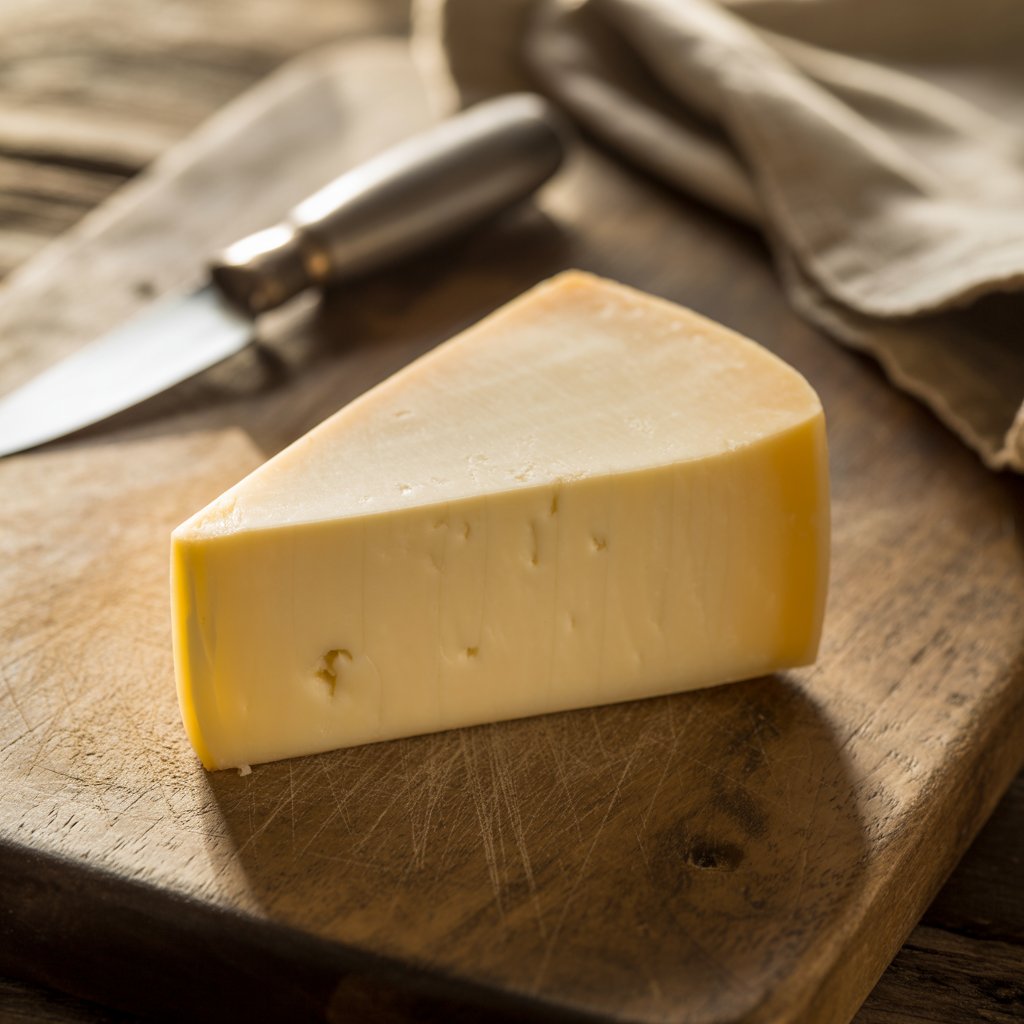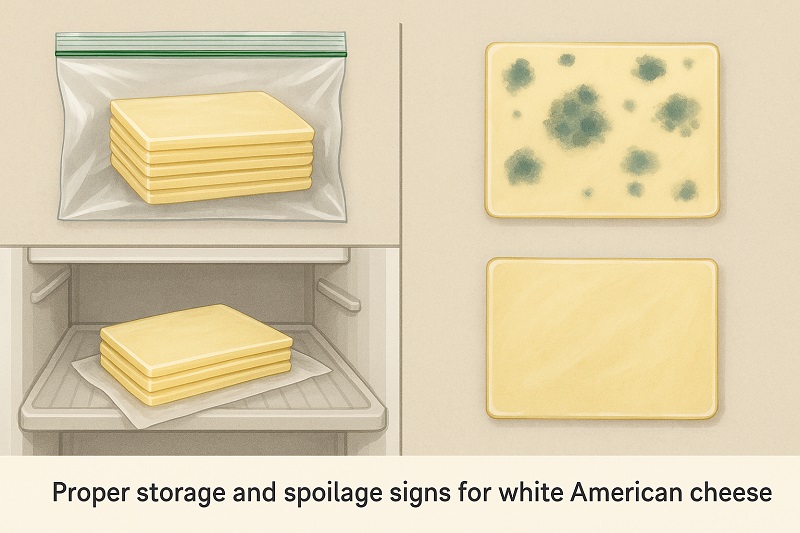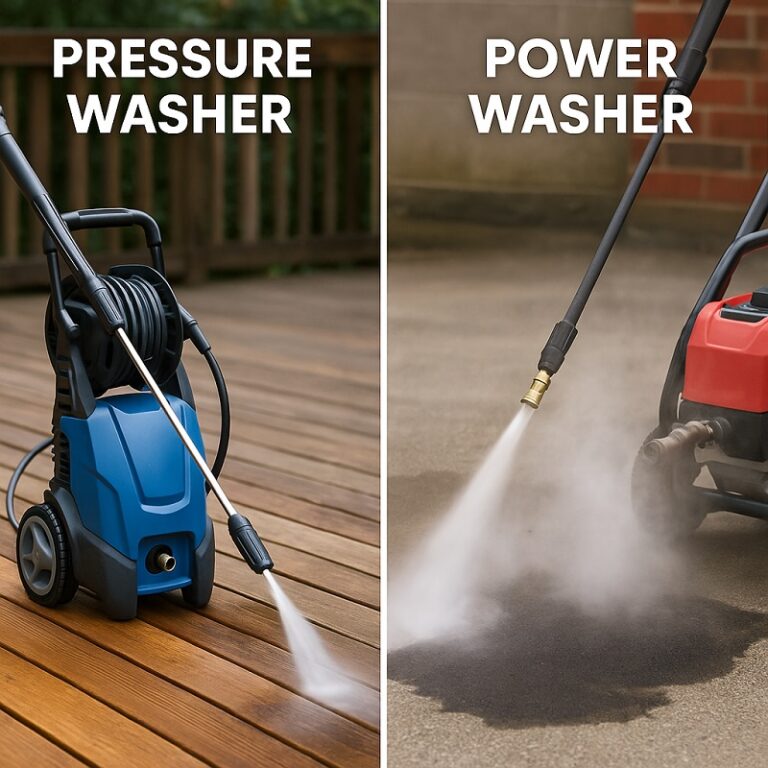60-Second Nutrition Snapshot
- Calories (per 1-oz/28 g slice) ≈ 105
- Protein ≈ 5 g
- Calcium ≈ 15 % of the Daily Value
- Sodium ≈ 450 mg—almost 20 % of the AHA’s daily limit of 1,500 mg
In short, White American Cheese gives you protein and bone-building minerals but you pay for that convenience in sodium and saturated fat. Americans clearly are okay with the trade-off: we now eat 42 lb of cheese per person per year—double the 1970s amount .
What Is White American Cheese?
Legally it falls under the FDA’s “pasteurized process cheese” standard (21 CFR 133.169). Manufacturers grind at least two cheeses, blend with milkfat and emulsifying salts like sodium citrate, heat until uniform, cool and slice.
The only difference between white and the orange slice is color. White American Cheese skips annatto, the plant-based dye that turns cheddar or “yellow” American orange. Skip the dye, skip the color—flavor stays the same.
Is White American Cheese Real Cheese?
Despite its popularity White American Cheese is often the subject of confusion and controversy. Many people think it’s “not real cheese” or even “plastic”—but what does the science and regulation say?
✅ The Legal Answer: It Depends on the Label
White American Cheese sold in delis or blocks meets the FDA’s definition of “pasteurized process cheese” under 21 CFR 133.169. That means it:
- Is made from one or more real cheeses (like cheddar, Colby or Jack)
- Includes milkfat, moisture and emulsifying salts to ensure even melt
- Is pasteurized and standardized for food safety
So yes—if it says “pasteurized process cheese,” it’s legally real cheese, just processed and blended.
But here’s where it gets tricky…
| Label Term | What It Means | “Real Cheese”? |
| Pasteurized Process Cheese | Made from 1+ real cheeses + milkfat + emulsifiers | ✅ Yes |
| Cheese Food | Lower milkfat, more moisture, added dairy ingredients | ⚠️ Partially |
| Cheese Product | Little to no regulation; can include non-dairy fats | ❌ No |
| Cheese Spread | Softer texture, more emulsifiers and moisture | ⚠️ Partially |
Why the “Not Real Cheese” Myth
- Texture – It’s smooth and meltable, not crumbly like cheddar.
- Packaging – Singles wrapped in plastic can feel artificial.
- Ingredients – Additives like phosphates and sorbates add to the “processed” reputation.
- Marketing Confusion – Brands often use vague terms like “cheese product” to cut corners.
✅ Bottom Line:
If you’re buying white American cheese from a deli or labeled “pasteurized process cheese,” it’s real cheese—just melted down, blended, and rebuilt to behave differently.
It’s no more “fake” than yogurt is to milk or tofu is to soybeans.
How White American Cheese Compares to Other Processed Cheeses
White American Cheese is often lumped in with other processed cheese products—but not all processed cheeses are created equal. Knowing how it stacks up against common supermarket options like Velveeta, Cheez Whiz, and natural shredded cheese blends helps clarify its place in the dairy aisle.
White American Cheese vs. Velveeta
White American Cheese is made from real cheeses like cheddar or Colby, emulsified and pasteurized for meltability. Velveeta is not technically cheese—it’s made from milk, whey, and oil-based ingredients to create a cheese-like flavor and texture.
➡️ Winner: White American in authenticity and flavor, Velveeta in melt uniformity for dips and sauces.
White American Cheese vs. Cheez Whiz
Cheez Whiz is a spreadable, shelf-stable product made mostly from processed cheese flavorings, whey, and emulsifiers. It has minimal or no real cheese.
➡️ Winner: Cheez Whiz is a convenience food, White American has better taste, real dairy protein and a cleaner label when deli-sliced.
White American Cheese vs. Pre-Shredded Cheese Blends Pre-shredded cheeses (like mozzarella or cheddar blends) are real cheeses coated with anti-caking agents like cellulose or potato starch. They don’t melt as smoothly as American because they’re not emulsified.
➡️ Winner: Pre-shredded cheeses are less processed but less great for creamy melts. White American is the melt master for grilled sandwiches or burgers.
What’s So Special About White American Cheese
- Balanced: More authentic than “cheese products” but more functional than natural cheese alone.
- Best Melter: Emulsifiers make it melt clean without separating—perfect for burgers, dips or breakfast sandwiches.
- Mild & Versatile: Not sharp like cheddar or funky like bleu, it blends with other ingredients.
How White American Cheese Is Made (Step-by-Step)
While it may not age like cheddar, white American cheese has a surprisingly technical process for perfect meltability and shelf life. Here’s how it’s made in most U.S. cheese plants:
Step-by-Step:
- Grinding – Cheddar, Colby or similar cheese blocks are ground into particles.
- Blending with Emulsifying Salts – Additives like sodium citrate or phosphate help the cheese melt smoothly by changing protein interactions.
- Cooking – The mixture is heated to form a uniform paste.
- Cooling – The molten cheese is rapidly cooled and then sliced, shaped or packed.
See the diagram below:
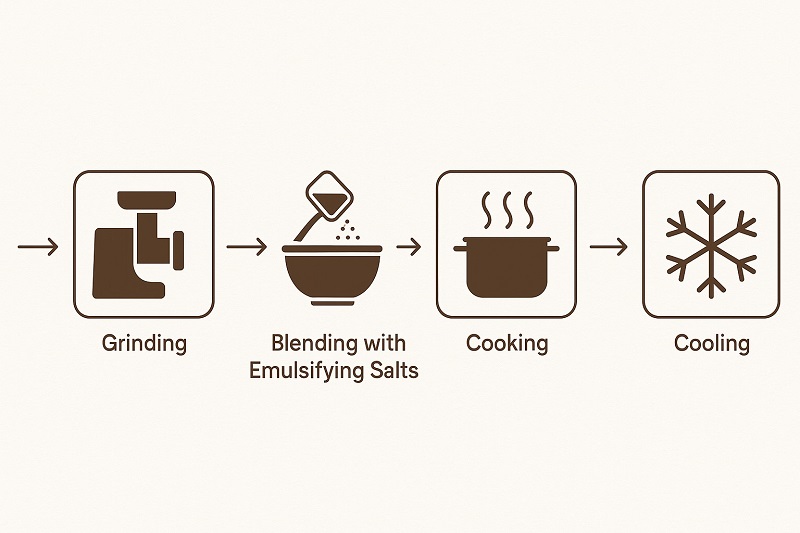
This modern process is why white American cheese melts evenly, doesn’t “break” and stays smooth when reheated.
Ingredient & Additive Deep-Dive
| Function | Typical Additives | Why They Matter |
| Melting/Texture | Sodium citrate, sodium phosphate | Bind calcium, keep proteins dispersed so the slice melts smoothly instead of separating. |
| pH Control | Lactic, citric or phosphoric acid | Ensures microbial safety and shelf stability. |
| Preservation | Potassium sorbate or sodium propionate (≤ 0.2 % by weight) | Inhibit surface mold per FDA rule. |
| Anti-stick | Lecithin (≤ 0.03 %) | Lets pre-sliced singles peel cleanly. |
Clean-label deli blocks from Boar’s Head and Dietz & Watson avoid sorbates but still use emulsifying salts.
Nutrient Profile in Context
| Nutrient (per 28 g) | White American | Cheddar | Mozzarella |
| Calories | 105 | 113 | 85 |
| Protein | 5 g | 6.5 g | 6.3 g |
| Saturated Fat | 4.6 g | 5.3 g | 3.2 g |
| Sodium | 450 mg | 180 mg | 175 mg |
Sources: Boar’s Head, USDA FoodData Central & EatingWell nutrient databases
Take-home: sodium is the outlier—often > 2× that of natural cheeses.
Health Science Spotlight
- Benefits
- Calcium & B-12 for bone density and nerve function.
- Dairy’s unique fatty-acid profile may raise HDL (“good”) cholesterol or leave it unchanged, according to a 2024 expert review.
- Fermented dairy—including processed cheese—shows a neutral or slightly protective link to CVD in large cohort meta-analyses.
- Risks
- Ultra-processed classification (NOVA-4): Frequent consumption of NOVA-4 foods correlates with higher obesity and cardiometabolic risk.
- Sodium-driven hypertension: One slice delivers ~20 % of the AHA’s daily sodium limit.
- Saturated fat still counts towards the 10 %-of-calories Dietary Guideline limit.
- Net Effect
An umbrella review of 29 prospective studies found cheese intake up to ~40 g/day was associated with 3-6 % lower CVD risk, but the curve flattened above that threshold. Translation: enjoy a slice—don’t stack five.
White vs Yellow American Cheese: Beyond the Color
- Colorant: Annatto (β-carotene-rich seed extract) gives yellow American its color; it adds zero nutrients or flavor.
- Meltability: Blind-taste panels (Uproxx 2023) found no flavor difference but noted yellow slices melt a few seconds faster, likely because the coloring oils lower moisture.
- Psychology: Consumers still expect a burger to ooze orange, so restaurants default to yellow even if the white slice is the same.
Consumption Trends & Market Data
USDA ERS data show American-type cheeses hit 16.2 lb per capita in 2022, while total cheese reached 42 lb—a record high driven by quick-service burgers and breakfast biscuits. Analysts project a 1.4 % rise to 17.1 lb by 2028 as fast-casual chains roll out “smash” burger menus.
Organic, rBST-free and “extra-melt” premium deli slices are the fastest-growing segment, up 8 % compound annual growth (IRI channel data 2023-24).
Environmental & Ethical Footprint
- Life-cycle assessments put the carbon cost of cheese at 8–14 kg CO₂e per kg, third only to beef and lamb among common proteins.* Processed cheese skips the aging rooms, saving energy vs. cheddar, but the gain is offset by high-volume plastic slice wrapping.
- The U.S. dairy sector has committed to a 30 % enteric-methane reduction by 2030 through feed additives and anaerobic digesters.
- Certified-humane brands (e.g., Organic Valley’s deli blocks) use pasture-based milk and recyclable paper wraps.
Culinary Intelligence: More Flavor, Less Sodium
- Half-slice hack: Fold one deli slice corner-to-corner and use it as two ultra-thin layers—melts just as well.
- Veggie companion rule: White American Cheese with roasted peppers or tomatoes; potassium counters sodium’s BP bump.
- Smart swaps: For grilled cheese, blend one part mozzarella with one part White American Cheese—same “stretch” with 40 % less salt.
Chef tip: Burger specialists aim for 22–25 g cheese per 5-oz patty—beyond that, fat pools and bun sogs.
Buyer’s Guide & Label Decoder
| Label Term | Meaning | Worth Paying For? |
| Pasteurized Process Cheese | Meets full FDA standard—≥ 47 % fat-in-solids, ≤ 43 % moisture. | ✔ Yes (baseline) |
| Cheese Food | Can drop to 23 % milkfat and add more water/starch. | ⚠️ Lower protein, melts great but saltier. |
| Cheese Product | Few rules; may include vegetable oils. | ❌ Skip if you want real dairy. |
Checklist:
- ≤ 400 mg sodium per 28 g
- Milk from cows not treated with rBST
- No artificial colors (if you truly want “white”)
- Deli-sliced blocks beat individually wrapped singles for 20-30 % less packaging waste.
The Best White American Cheese Brands in the USA (2025 Rankings & Reviews)
With dozens of options on grocery shelves—from deli-sliced to individually wrapped—white American cheese lovers want flavor, clean ingredients, and reliable melt. Here’s how top brands stack up in 2025, based on ingredient quality, nutrition, meltability, and consumer ratings.
| Brand | Why It’s a Winner | Sodium (per 28g) | Notable |
| Boar’s Head White American | Clean dairy flavor, deli-sliced, no artificial preservatives | 350 mg | Widely available, great for cold or hot sandwiches |
| Land O’Lakes Extra Melt White American | Exceptional melting quality, buttery texture | 400 mg | Restaurant-grade, available in bulk |
| Dietz & Watson Originals White American | No potassium sorbate, rBST-free milk | 200 mg | Lower sodium option, natural casing |
| Cooper Sharp White | Bolder cheddar-like flavor, rich melt | 460 mg | High sodium, but ideal for burgers or melts |
| Organic Valley White American Cheese Block | Organic, pasture-raised milk, no added color | 320 mg | Eco-friendly packaging, good for slicing at home |
Pro Tip: For best freshness and fewer additives, choose deli counter-sliced versions over plastic-wrapped singles.
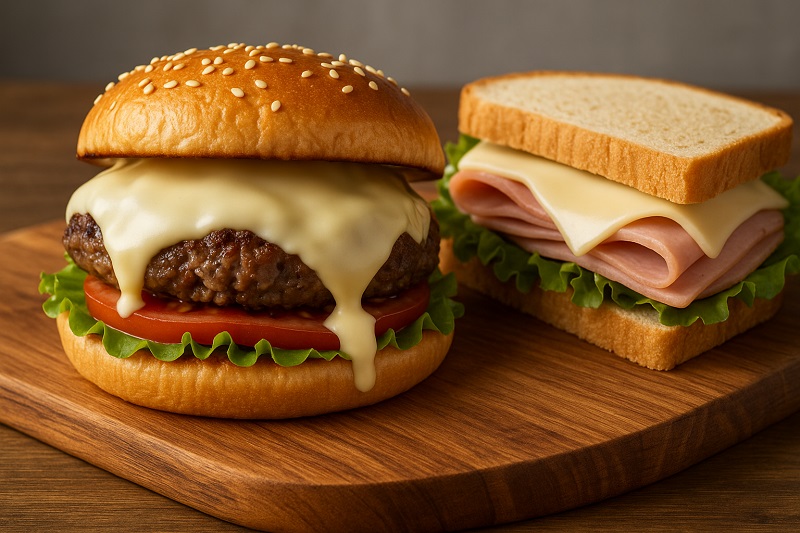
Popular Uses & Top Dishes with White American Cheese
From classic diner melts to game-day snacks, white American cheese is loved for its creamy melt and neutral flavor. Here are some of the most popular and delicious ways people use it:
Top 7 Dishes That Love White American Cheese
- Cheeseburgers (Smash, Diner-Style, or BBQ)
o The go-to for that gooey, perfectly melted cheese layer that holds the burger together.
- Philly Cheesesteaks
o Authentic Philly purists often choose white American for its silky melt and mild taste over Cheez Whiz or provolone.
- Grilled Cheese Sandwiches
o A 50/50 blend of white American and mozzarella delivers ideal melt and pull.
- Breakfast Sandwiches (Egg & Cheese)
o Its quick meltability makes it a favorite in drive-thru and homemade versions alike.
- Macaroni and Cheese (Stovetop Version)
o White American lends creaminess when melted into béchamel or milk-based sauces.
- Queso Dip & Nachos
o Many Tex-Mex queso recipes use white American for the base, thanks to its emulsification power.
- Hot Subs & Deli Melts
o From meatball subs to turkey melts, it binds ingredients without overpowering flavor.
Pro Tip: For a protein-packed breakfast, fold a half-slice into scrambled eggs or an omelet with spinach and mushrooms.
Shelf Life, Storage & Safety Tips for White American Cheese
White American Cheese may be processed for stability, but it still needs proper storage to stay fresh, flavorful and safe. Whether you’re buying deli-sliced blocks or individually wrapped singles, here’s how to keep it in top condition—and know when to toss it.
How Long Does It Last?
- Deli-sliced white American cheese:
Typically lasts 2 to 3 weeks in the refrigerator when wrapped in wax paper or cheese paper. Check the “sell-by” date and use within 7–10 days once opened.* Individually wrapped singles:
Up to 2–3 months unopened. Opened: 10 days
❄️ Can You Freeze It?
Yes—but with caveats. Freezing white American cheese is safe, but it may change texture.
- How to freeze: Place slices between wax paper or parchment sheets and store in an airtight container or freezer-safe bag.
- Shelf life in freezer: Up to 2 months.
- Texture changes: May become slightly crumbly or less smooth when thawed. Best used in cooked recipes (like melts, grilled cheese or casseroles) after freezing.
⚠️ How to Tell If It’s Gone Bad
Look for these signs that your cheese has turned:
- Sour or ammonia-like smell
- Discoloration (brown, green or gray spots)
- Slimy or sticky surface
- Visible mold, even on one slice—throw out the entire package
Tip: Even though processed cheese is less prone to mold than natural cheeses, it can still spoil if exposed to moisture or handled with unclean utensils.
Storage Best Practices
- Wrap properly: Store deli slices in parchment or wax paper, then place in a resealable bag. Avoid direct contact with plastic wrap to reduce sweating.
- Keep it cold: Store in the bottom drawer or coldest part of the fridge (34–38°F / 1–3°C).
- Avoid temp swings: Keep cheese in the back of the fridge—not the door—to prevent exposure to warm air.
Special Populations & FAQs
Is White American Cheese safe in pregnancy?
Yes—because it’s pasteurized by law. Mind the sodium.
Does it contain lactose?
About 1–2 g per slice—moderate. Very lactose-sensitive folks may prefer aged cheddar (<0.5 g).
Keto-friendly?
Carbs are negligible (<1 g), but track calories.
Can I freeze it?
Yes, but expect texture cracks; best for melted dishes.
Is it gluten-free?
Pure dairy cheeses are naturally gluten-free; always check deli cross-contact.
Key Takeaways Cheat-Sheet
- White American Cheese is real dairy, but it’s ultra-processed and sodium-dense.
- One slice delivers useful protein and calcium yet 20 % of a day’s sodium.3. Research shows mild benefits at ≤ 1 slice/day; risks increase with multiple slices.
- Choose deli-cut brands with ≤ 400 mg sodium, no sorbate, and rBST-free milk.
- Melt over veggies or half-slice to enjoy comfort without the cost.


